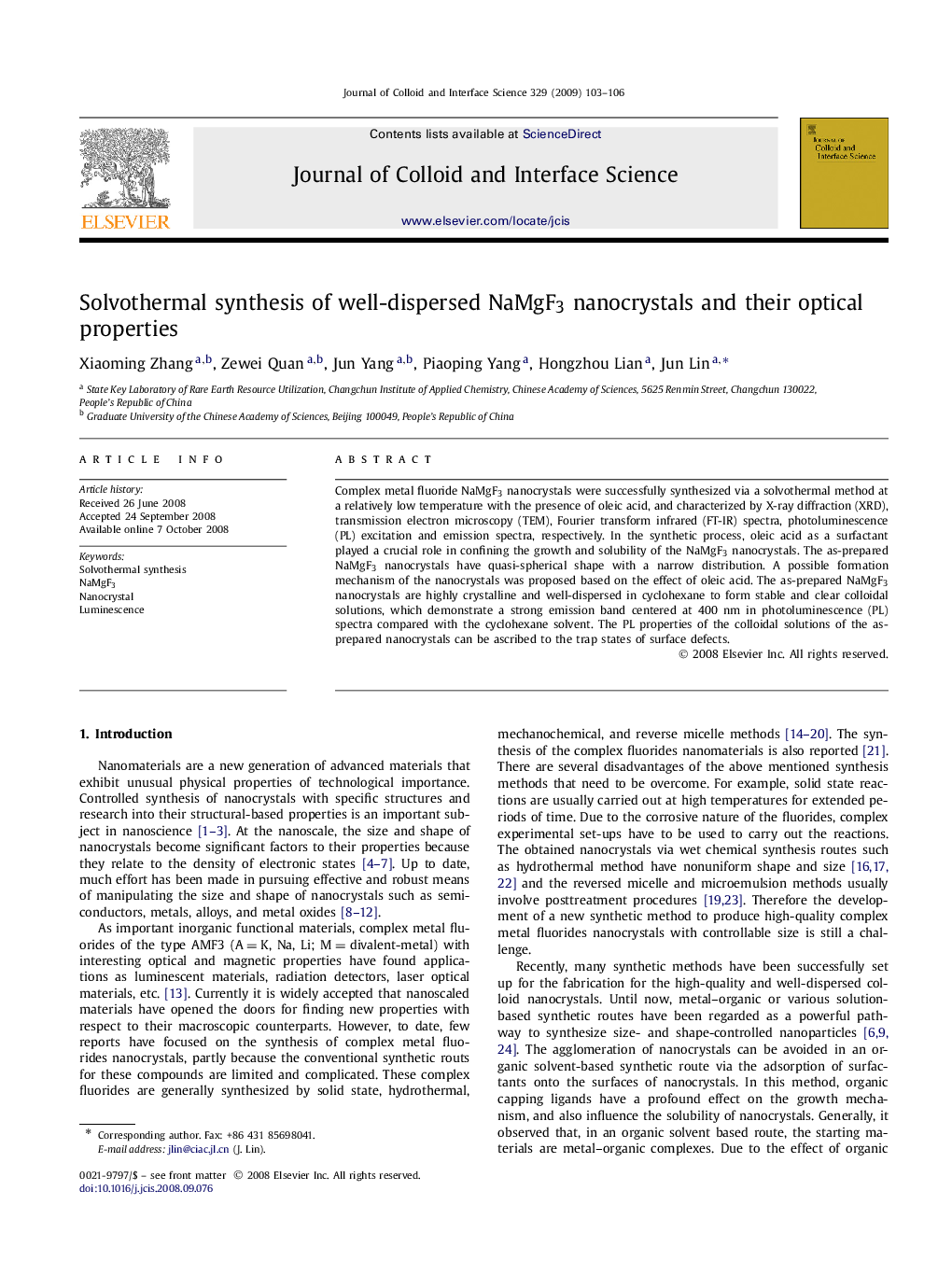| Article ID | Journal | Published Year | Pages | File Type |
|---|---|---|---|---|
| 611170 | Journal of Colloid and Interface Science | 2009 | 4 Pages |
Complex metal fluoride NaMgF3 nanocrystals were successfully synthesized via a solvothermal method at a relatively low temperature with the presence of oleic acid, and characterized by X-ray diffraction (XRD), transmission electron microscopy (TEM), Fourier transform infrared (FT-IR) spectra, photoluminescence (PL) excitation and emission spectra, respectively. In the synthetic process, oleic acid as a surfactant played a crucial role in confining the growth and solubility of the NaMgF3 nanocrystals. The as-prepared NaMgF3 nanocrystals have quasi-spherical shape with a narrow distribution. A possible formation mechanism of the nanocrystals was proposed based on the effect of oleic acid. The as-prepared NaMgF3 nanocrystals are highly crystalline and well-dispersed in cyclohexane to form stable and clear colloidal solutions, which demonstrate a strong emission band centered at 400 nm in photoluminescence (PL) spectra compared with the cyclohexane solvent. The PL properties of the colloidal solutions of the as-prepared nanocrystals can be ascribed to the trap states of surface defects.
Graphical abstractNaMgF3 nanocrystals were first synthesized via a solvothermal method with the presence of oleic acid, which played a crucial role in confining the growth and solubility of the nanocrystals. The obtained NaMgF3 nanocrystals have quasi-spherical shape with a narrow distribution, and they can be well dispersed in nonpolar solvents to form stable and clear colloidal solutions, which show a strong emission band centered at 400 nm.Figure optionsDownload full-size imageDownload as PowerPoint slide
